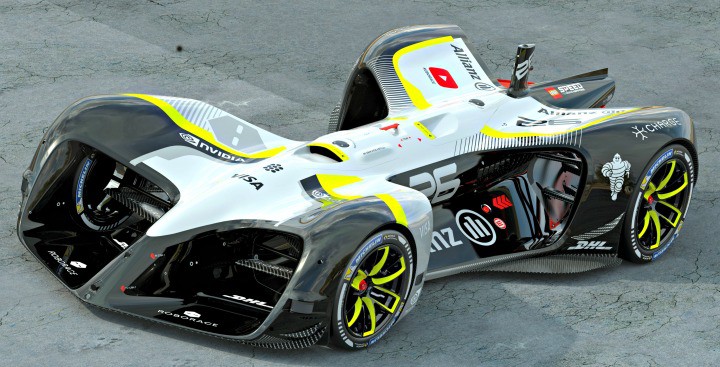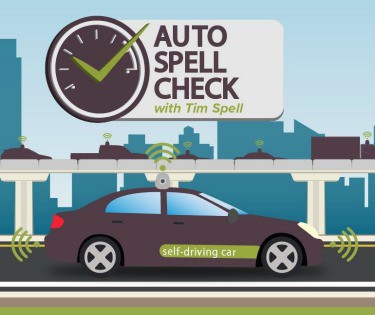Driverless Race Cars? How Technology Could Shift Auto Racing Into a New Gear

Editor’s Note: This insuranceQuotes article is one in a series exploring the future of self-driving automobiles and how they will reshape society and Americans’ attitudes toward commuting, road-tripping and even that quick trip to the market.
Driverless auto technology is in an awkward stage, marked by public skepticism, so venturing into discussions on the feasibility of autonomous racing seriously is stretching the envelope. For mainstream automakers, race cars without a human element have a questionable future, but London-based Roborace is aggressively promoting the concept with track-proven cars.
 The Roborace Championship is the result of a partnership between Formula E racing and the Kinetik futures investment firm. Starting during the 2016-17 Formula E season, driverless Robocars performed on the track prior to the main race.
The Roborace Championship is the result of a partnership between Formula E racing and the Kinetik futures investment firm. Starting during the 2016-17 Formula E season, driverless Robocars performed on the track prior to the main race.
Roborace bills the series as a “competition of intelligence,” so each team races an identical car to ensure the competitive advantage is only gained via superior real-time computing analysis. The goal is to advance software for passenger vehicles to adopt.
“It’s gaming, motorsports, technology and entertainment all rolled into one,” says Roborace CEO Denis Sverdlov.
The futuristically sculpted Robocar is the brainchild of Daniel Simon, who has created vehicles for sci-fi movies that include “Tron Legacy” and “Oblivion.”
His cars measure just over 15.6 feet long and approximately 6.5 feet wide, and weigh around 2,200 pounds. Muscle is provided by four 300-kilowatt electric motors that propel the cars to speeds in excess of 200 mph.
Technologies allowing driverless racing include five lidar measurement sensors, two radars, 18 ultrasonic sensors, two optical speed sensors, six artificial-intelligence cameras and global navigation satellite system positioning. Its brain power, which is programmed by team engineers, is by the mind-boggling-quick Nvidia Drive PX2.
While Roborace spectators are mostly captive Formula E attendees, the prospective automated-racing audience’s demographics is difficult to pinpoint. It’s arguably akin to “BattleBots” fans. “BattleBots” is a spectacle with worldwide media coverage, in which fans root for engineering teams and their dueling weaponized mobile robots.
Generally speaking, auto-manufacturer experts don’t see fans warming up to driverless racing, but stress their opinions don’t necessarily represent the views of their respective manufacturers.
RELATED: These Driverless Auto Features Are Available Now
Given the mystique attached to race-car drivers for nearly a century, says T.E. McHale of Motorsports Communications, American Honda Motor Co., he can’t see the general public embracing the concept.
“I believe that it’s important to racing fans to be able to compare the skills and make heroes of specific drivers,” Mc Hale says. “To suddenly make irrelevant the accomplishments of people like Mario Andretti, Parnelli Jones, A.J. Foyt, Rick Mears, Richard Petty, Dario Franchitti and Jimmy Johnson strikes me as rather absurd.”
Chris Keeffe, senior manager group communications, Nissan North America, also questions the absence of the human element and whether people will be interested in a race that only showcases technology.
“If there’s no human element would we be interested in it?” Keeffe says. “We’re interested in sports figures and their personalities, and their personal lives — without that what are you left with, just the technology. Is that going to captivate enough people?”
There’s no doubt autonomous vehicles will be part of the fabric of our lives in the future, he says, and it’s just a question of how quickly the technology develops. After the use of autonomous technology in terms of everyday driving is fundamentally addressed, then a manufacturer can start thinking about its role in motorsports.

“Race series take a lot of money to support, and you generally want either an in-person or TV audience to help pay the bill,” says Chris Martin, Automobile Public Relations, American Honda Motor Co. “Thus, I don’t think there’s a feasible business model for automated racing, in the near term at least.”
Martin also questions how attracted the public will be to autonomous racing, but says engineers developing the cars definitely will be interested. This audience of engineers may be the key to the future of autonomous race cars.
“Automated racing could help test the dynamic capabilities of the hardware and software required for regular automated driving, similar to how today’s racing activities spur development of advancements in chassis and engine technology,” Martin says. “Competition tends to accelerate development and the crucible of the racetrack has long been an important part of Honda’s drive to improve its products, and as part of the development of top-tier engineers.”
McHale agrees: “There may be a place for autonomous race cars when it comes to the testing of components in a neutral environment.”
The general opinion of engineers is that setting up an autonomous car to race is less challenging than creating a driverless vehicle for the streets.
“In many ways, a racetrack would be an easier environment than a public road,” Martin says. “The same hardware that’s needed for on-road automated vehicles would be required — cameras, radar, lidar, etc.”
“Normally for autonomous driving you need a sensor set capable of identifying all objects around the car, as well as information to locate the car,” says Marcus Rothoff, Autonomous Driving program director, Volvo Cars. “To do this a detailed map is needed — a very detailed map of the track, including barriers, etc. would be required. Thus, track specific for dedicated tracks, no matter what track type.”
After thorough mapping, you only need to worry about the other race cars, says Martin. Unlike public roadways there’s no pedestrians, animals, balls rolling into the road, etc. Race cars could be efficiently monitored with transponders V2V and V2X.
“Questions would then arise about whether that transponder data is fully shared with other vehicles, as it would be on public roads for safety,” he says. “If the car ahead knows that the car behind is preparing to pass, would it then block, etc. If you eliminate that shared data, then you lose some of the translation from racetrack to road.”
Vehicle-to-vehicle communication to avoid collisions is being promoted as a safety feature for future passenger cars. Considering that part of auto-racing’s appeal is the gamble that cars might crash, elimination of the danger aspect would dampen interest in driverless racing. Similarly, the excitement generator of the aforementioned “BattleBots” competition is the expectation of machine carnage.
Feedback from auto-industry experts, weighed with the reality of Robocars performing at Formula E events, points to the short-term future of driverless race cars being limited to warm-up acts for the main human-driver performances and, more importantly, as engineering tools for auto manufacturers to test vehicle hardware and software.

